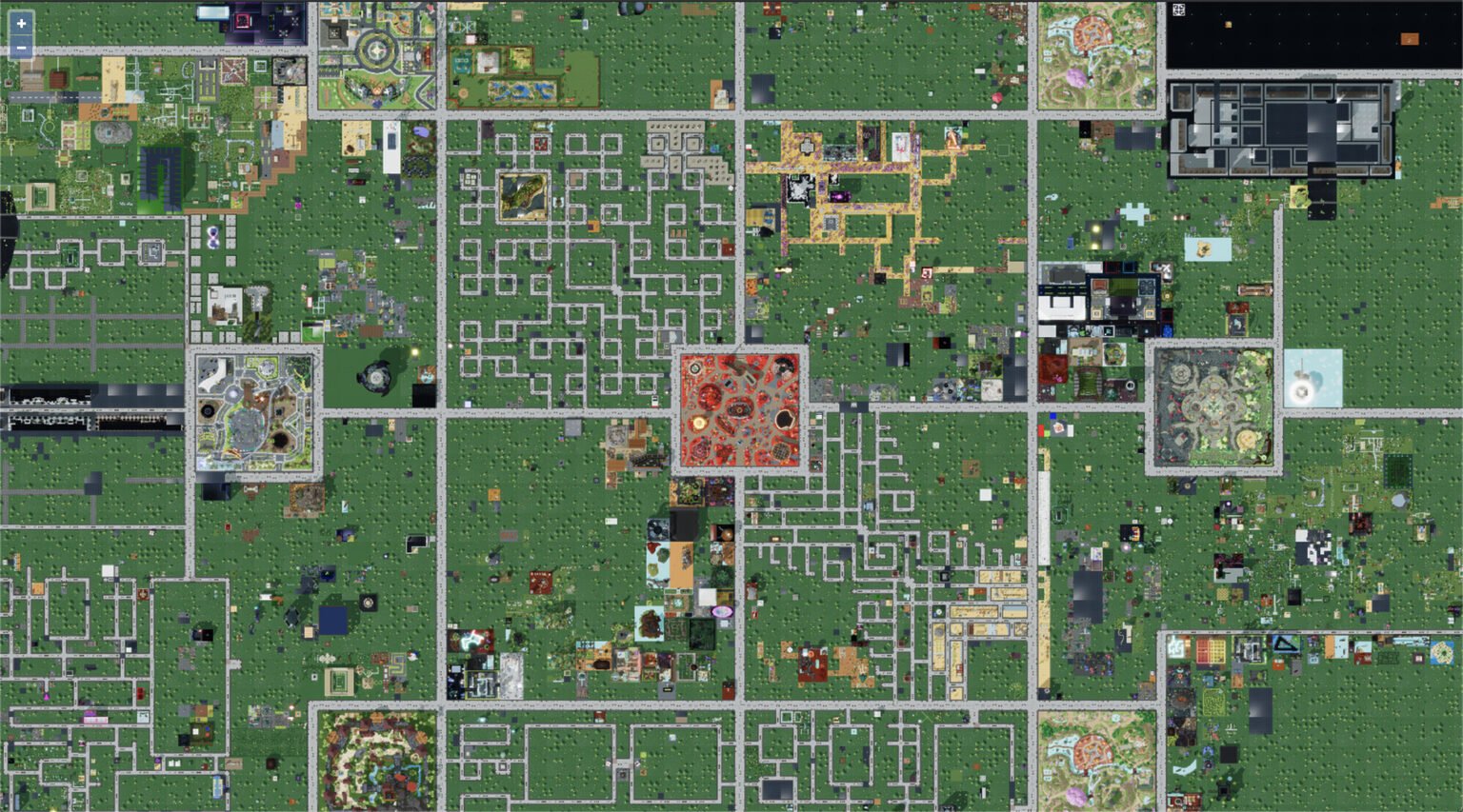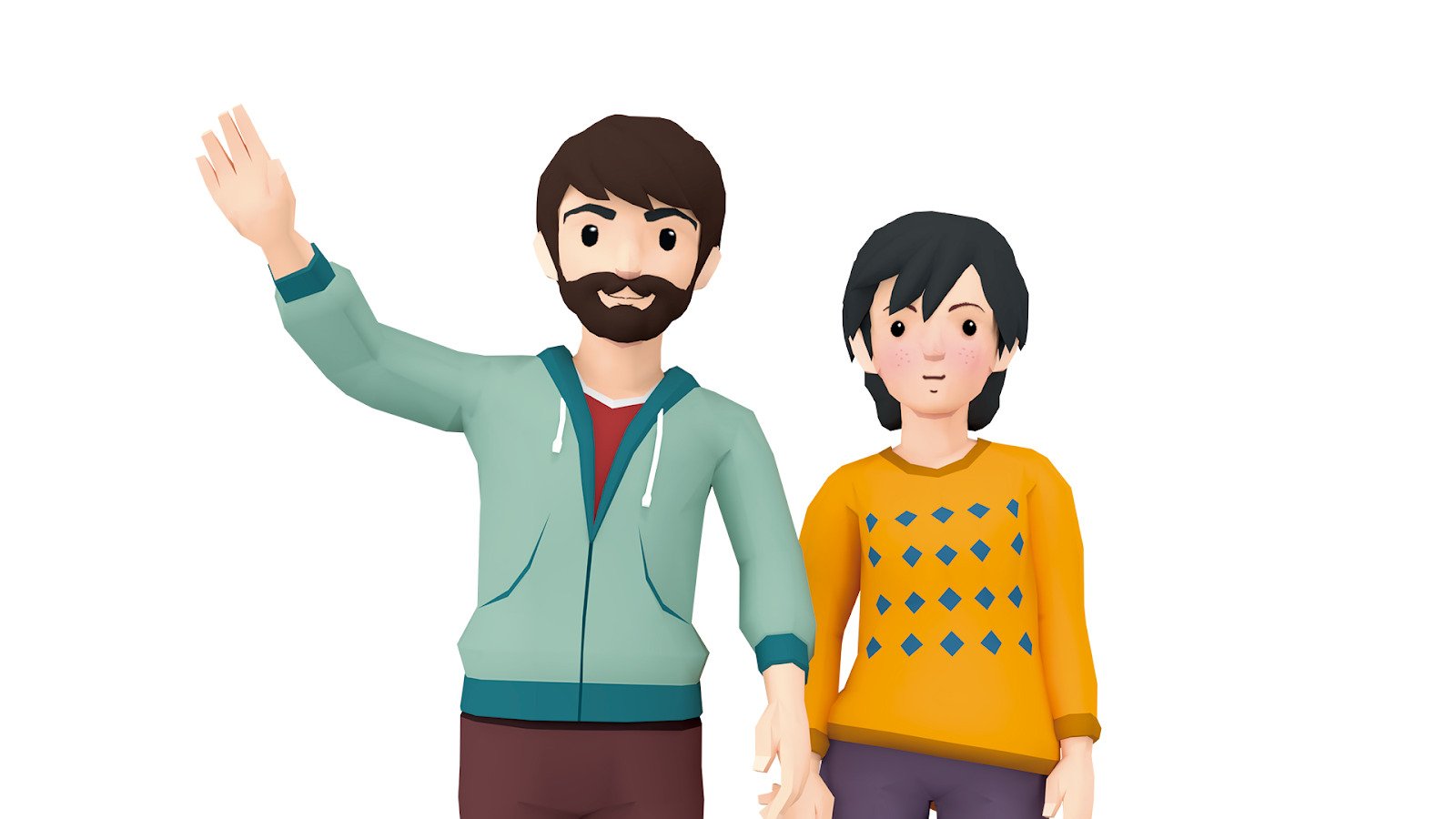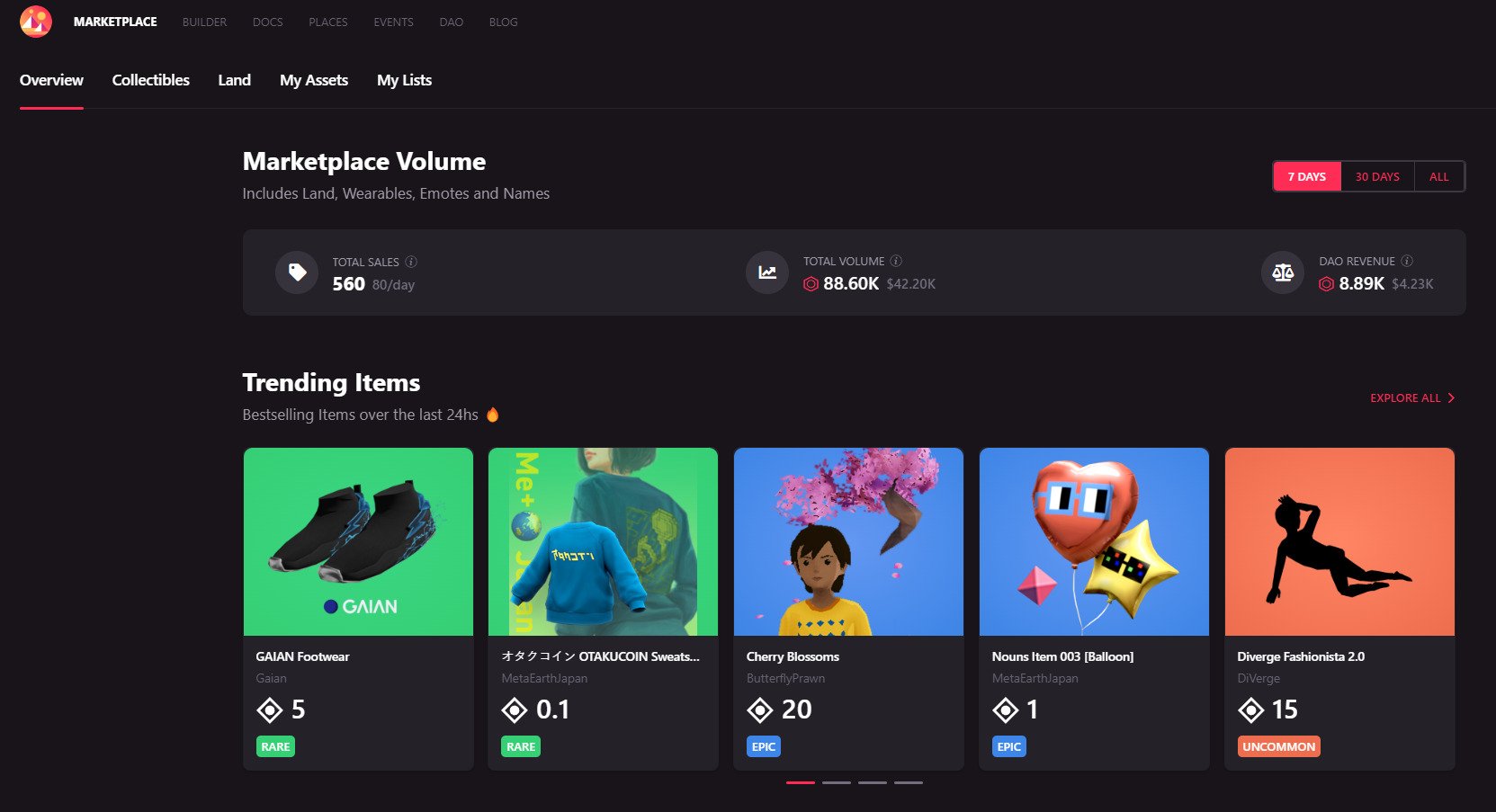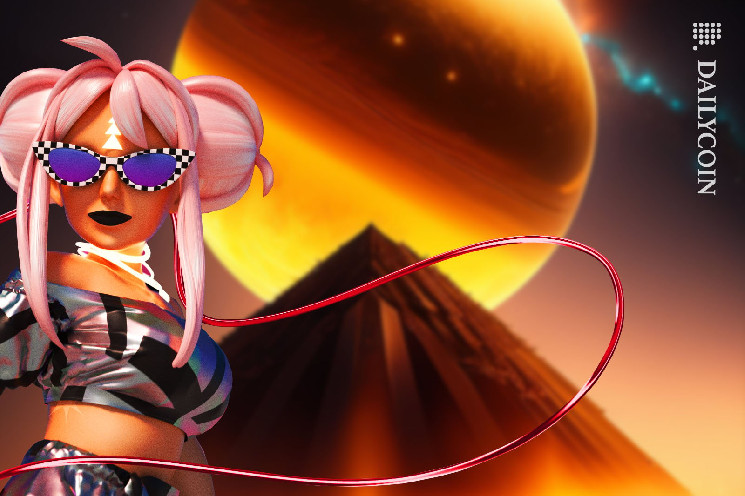In a world where major tech companies like Meta are playing loose with their interest in the metaverse sector, Decentraland stands tall as a pioneer in shaping the next generation of Web3. With its unwavering commitment and community-forward approach, Decentraland has become a vibrant hub for hosting trending digital events with its immersive digital world.
As the metaverse emerges as a transformative force in evolving the future of the internet, DailyCoin dives into the limitless possibilities offered by Decentraland and explores why it’s one of the leading forces in the metaverse landscape.
What Is Decentraland?
Decentraland is a blockchain-based decentralized, user-owned, open-world metaverse that mimics reality with its numerous features. In this virtual reality platform, users can partake in myriad activities like owning digital real estate, generating content, voting on policies, earning money, and more, just as they would in real life, thanks to blockchain technology like NFTs, cryptocurrencies, and more.
Veteran developers Ariel Meilich and Esteban Ordano ideated and founded the Decentraland platform in 2015 and have raised over $24 million in initial coin offerings (ICO).
Although both Meilich and Ordano have stepped down as founders as of late 2020, the metaverse project is currently run by an intuitive decentralized autonomous organization (DAO) where Decentraland users vote on new policies and updates to the project.
Essentially, Decentraland is similar to titles like Roblox, Minecraft, and the Sandbox. However, the virtual world takes a unique approach by being a fully functional metaverse with real-world capabilities and a decentralized infrastructure.
It is built on top of a sophisticated architecture that leverages Ethereum smart contracts, divided into three layers: the consensus layer, the land content layer, and the real-time layer.
The consensus layer keeps track of ownership through a ledger. This could be land ownership, collectibles, wearables, avatars, and more. The content layer is in charge of what happens inside each LAND parcel. This layer is responsible for everything you see in the Decentraland metaverse. And finally, the real-time layer is where all social interactions and events occur within Decentraland.

The Decentraland Ecosystem
The Decentraland ecosystem features a combination of fungible and non-fungible digital assets that work together to power its comprehensive digital infrastructure and experience.
MANA Token
The MANA token is Decentraland’s main utility token. It’s an ERC-20 token built on the Ethereum blockchain and powers everything in the ecosystem, including voting on updates, acquiring LAND parcels, buying NFTs from the Decentraland marketplace, and more.
MANA has a max supply of around 2.2 billion tokens. At press time, its current price is $0.46 apiece, 92% down from its all-time high of $5.85. It boasted a total market capitalization of $873 billion, a circulating supply of 1.87 billion MANA tokens, and a 24-hour trading volume of $59 million, according to CoinMarketCap.
Since Decentraland is one of the leading metaverse platforms, users can buy MANA from any approved centralized crypto exchange, such as Binance and Coinbase, with fiat currency like USD or digital currencies like bitcoin (BTC), ether (ETH), or BNB. Users can also acquire MANA from decentralized crypto exchanges like UniSwap.
LAND
The Decentraland has hectares of digital plots spanning its open-world game, where each parcel of land is a unique, one-of-one, ownable digital real estate represented by an Ethereum ERC-721 non-fungible token (NFT) called LAND.
According to Decentraland, its gigantic 3D grid has a total supply of 90,601 plots of LAND NFTs, each with a width and length of 16 meters. Each LAND is placed within different neighborhoods in-game, which determines their price like the real world.
Users can buy these digital plots of LAND and assume complete digital ownership over them. They can host land content like concerts, events, and contests using Decentraland’s builder tools or rent out their virtual real estate to other creators in the metaverse. The possibilities are limitless.
Since most LAND parcels are sold in private auctions, users must resort to secondary marketplaces like OpenSea to get some. At press time, the cheapest LAND on OpenSea cost 0.5 ETH or $891, whereas the most expensive LAND cost 192 ETH or $342,000.
Decentraland Features
Decentraland sets itself apart from other virtual worlds with its innovative features. By harnessing blockchain technology and decentralized finance (DeFi), the virtual world creates a truly immersive experience that offers a glimpse into the future of the metaverse.
Here are some of Decentraland’s many features that make it one of the leading metaverse platforms today.

Avatars
An avatar is a Decentraland user’s identity within its vast virtual world. Every player must create their avatar with features of their own choice. They can play with an array of different options like gender, skin color, eye shape, and wearables, among others, to better reflect their physical selves in the digital world.
Once players have designed their avatars, it is published as an NFT, which they can sell on the marketplace. Users can create avatars only once, and further customization to the character will be limited to premium wearables and collectibles like beanies, trousers, backpacks, and more.
Decentraland Builder
Decentraland builder is at the core of the metaverse experience. It’s a one-of-a-kind, cutting-edge, and powerful tool that brings LAND parcel owners’ imaginations into virtual reality. LAND holders can choose from various terrains, objects, houses, and 3D structures to bring their digital plots to life.
While Decentraland’s builder is quite straightforward and has more than enough features to cater to the needs of every user, it also allows designers to import 3D models to the metaverse, given they meet the prerequisite requirements.
Players can use 3D editing tools like Blender to create and render metaverse environments to host their LAND parcels. From concerts to skyscrapers, users can host it all using the Decentraland builder tool.

Decentraland Marketplace
The Decentraland marketplace is designed to cater to the diverse needs of its players, delivering them with all the essential in-game resources. Operating on the Ethereum blockchain optimized by Polygon, players can scour the marketplace to sell, purchase, and trade assets.
They can trade LAND, 3D objects, in-game collectibles, avatars, clothes, and more from the Decentraland marketplace using MANA. The marketplace also allows users to upload, publish and sell their NFT assets made with Decentraland Builder.
Decentraland DAO
Ariel Meilich and Esteban Ordano of the Decentraland Foundation aimed to make the metaverse autonomous by diminishing centralized control. They transferred Decentraland’s governance to its users via the Decentraland DAO.
The DAO is the governing body of the Decentraland metaverse. It is where all the decisions, such as bans, smart contract changes, policy updates, and more, are made. To participate and vote in the DAO, players must hold either LAND, MANA, or NAMEs.
Decentraland Worlds
Given its popularity in the metaverse space, Decentraland recently launched a new Worlds feature to welcome more citizens to its virtual world. Previously citizens were required to own LAND to host exclusive events; however, the Worlds feature has since lowered the barrier to becoming a Decentraland creator.
Users can create their bespoke virtual space in Decentraland, separate from the main metaverse. It comes at no cost and is available to anyone who owns a Decentraland NAME NFT. It’s important to note that Worlds was designed for players to create their own 3D space and cannot be sold or traded. They are intended to serve as a place for designs to build, experiment, and host events and interactive events without owning LAND.

Rental
The Rental feature is one of Decentraland’s most ingenious solutions to welcoming more users to its platform and providing more incentives to them. The features allow LAND owners to list their LAND for rent in the Decentraland Marketplace with the help of a hybrid on-chain and off-chain mechanism that relies on smart contracts and special signatures.
Decentraland Studios
Decentraland highly encourages community-generated projects. To foster innovation and exciting experiences, the metaverse has established a platform called Decentraland Studios to help creators and startups turn their ideas into reality.
Powered by the Decentraland DAO grant, Decentraland enables anyone with ideas for content or an event in Decentraland to speak up and pitch their ideas. Today, Decentraland Studios has become “the hub” for users and creators as they brainstorm exciting new ideas.
How to Join Decentraland
Joining Decentraland is fairly simple and can be done from any Web3-supported browser, such as Google Chrome. Players can also download a stand-alone app for Windows to get started.
To play the game, navigate to the Decentraland website. Navigate to explore on the web. Users will be asked to connect their wallets. They can connect any ETH-based wallet like MetaMask to join. Players also have the option to explore the virtual world as guests.
Once they’ve connected their wallet, players must set up their avatars, and that’s it.
On the Flipside
- According to DappRadar, NFT trading had significantly increased in Q1 of 2023, totaling $311 million – a 277% increase since Q4 2022. At the same time, virtual land trading set a new all-time high, recording 146,690 trades. Yuga Labs, MG Land, The Sandbox, and Decentraland were some of the major proponents behind the spike.
Why This Matters
The metaverse is no longer a concept and has turned into reality. While development has been relatively slow in 2023, platforms like Decentraland and the Sandbox are leading the charges as some of the best metaverse platforms in the industry, hosting numerous mega-events, building its community on social media, and providing a glimpse into what the metaverse would look like in the future.
